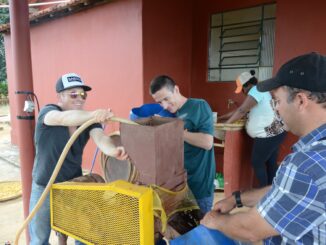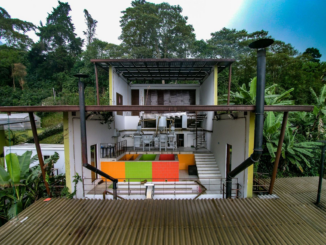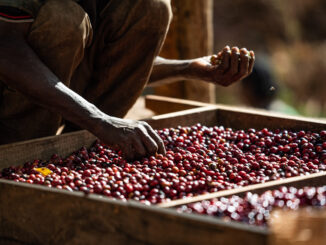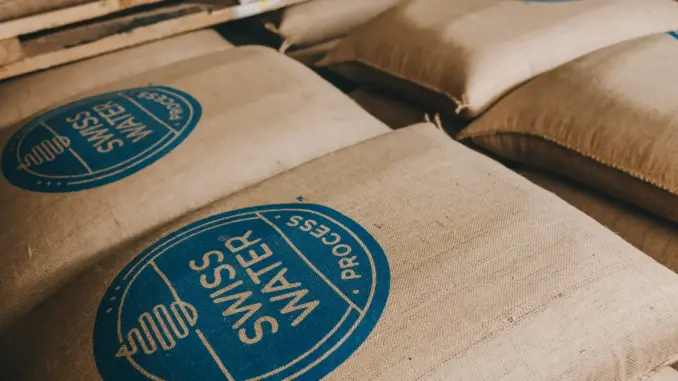
Continuing our series on coffee processing, we learn about Swiss Water Decaffeinated Coffee, a 100% chemical-free decaffeination method.
BY TANYA NANETTI
SENIOR ONLINE CORRESPONDENT
Photos courtesy of Swiss Water
Delving into the amazing world of high-quality coffee, one thing you notice is the incredible difference in flavors and aromas of every single coffee.
No single specialty coffee tastes exactly the same as another. These differences depend on many different factors, including country of origin, terroir and coffee variety, processing, and roasting style.
A Unique Decaffeination Method
Most coffee processes are chosen to enhance a specific coffee, but some processes have a totally different purpose. This is the case for the Swiss Water Process, developed as an alternative way to decaffeinate coffee.
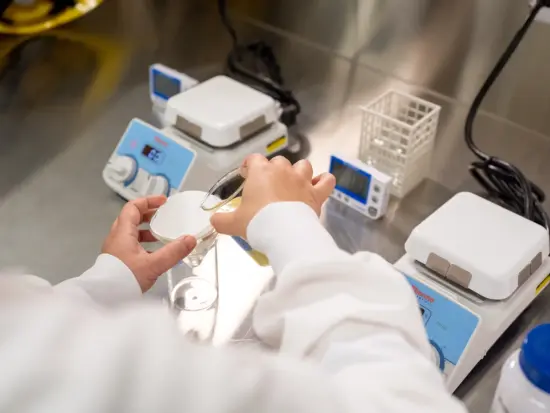
Stacey Lynden, the cupping lab manager for Swiss Water Decaffeinated Coffee Inc., is the perfect person to help us understand more about this specific decaffeination process. She is responsible for quality control for Swiss Water; she and her team cup and perform physical analysis tests on all of the coffees Swiss Water decaffeinates. They ensure all of the coffee that Swiss Water processes is as similar to the original coffee as possible.
But what is the Swiss Water Process? And how does it differ from other decaf?
“The Swiss Water Process is a 100% chemical-free decaffeination method that uses water to decaffeinate coffee,” Stacey explains. “Surprisingly, the large majority of the world’s decaffeination still happens through chemical-based processes that use methylene chloride or ethyl acetate. So a big difference in our process is that chemicals never enter our facility, let alone come in contact with our process or the coffee. Comparing our process to other chemical-free processes, ours has a reputation for very high quality, particularly when comparing pre- and post-decaffeination samples where we are looking to maximize likeness across them.”
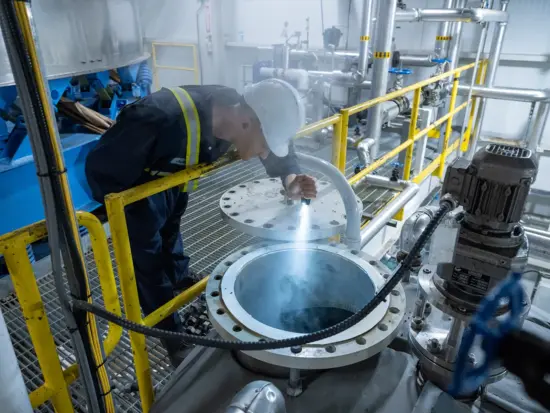
The process to achieve this high quality is complex and delicate, and consists of different stages.
Green Coffee Extract
After the green coffee has been cleaned and its silver skin has been removed, it is pre-soaked to expand the beans. And here is where things start to get interesting. “The caffeine-free Green Coffee Extract (GCE) is then introduced into the coffee,” Stacey shares. “GCE is our decaffeination solvent, consisting of all of the naturally occurring soluble solids from coffee, minus the caffeine. When introduced, the imbalance in caffeine content causes it to migrate from the coffee beans to the GCE. When the coffee is 99.9% caffeine free (after about 10 hours) it is sent to the dryer, then bagged and shipped.”
Unlike with other specific coffee fermentation, there is no specific flavor profile for Swiss Water-processed decaf coffees. As mentioned, Swiss Water can, and does, decaffeinate coffees from almost every origin, preserving the specific flavor of that single coffee in the best possible way.
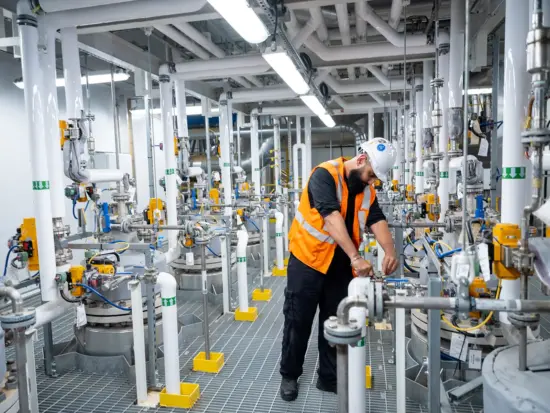
Small Batch Series
Stacey illustrates how the Swiss Water Process maintains the high quality of coffee by showcasing their Small Batch Series. It “does a great job of highlighting what the Swiss Water Process is capable of, focusing on highly traceable, unique coffees that also have an emphasis on sustainability, quality, and community,” she says.
A natural anaerobic sourced through Creativa Coffee District (CCD) in Chiriquí (Panama), recently featured in the series, is a great example of what a Swiss Water decaf coffee can taste like. “The anaerobic natural process gives the cup a developed lactic acidity and creamy body with complex, intricate fruit and spice notes like cinnamon, black tea, mango, and plum,” Stacey explains. “This is just one example, though. We have featured many delicious coffees in our Small Batch Series over the years, including a Red Honey from Peru that we are offering right now, and a Brazil from Daterra.”
Sustainability
As with all other types of processing, the Swiss Water Process has its benefits.
“The Swiss Water Process doesn’t overtake the flavor of the origin and keeps the majority of original flavors intact,“ Stacey shares. “Furthermore, the Swiss Water Process has many sustainable aspects, namely being chemical free. We are proud to be the only decaffeination company that is focused solely on chemical-free processing. We also create our GCE only once, reusing it ongoing. In regard to water usage, we return 85% of that used in our process to the community supply. And we regenerate and reuse our carbon over and over again.”
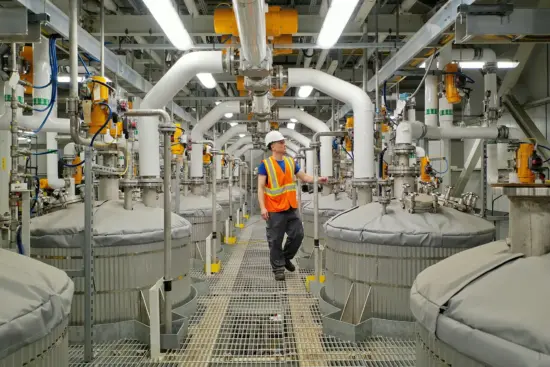
Stacey mentions one downside of the process, and what they’re doing to avoid the problem. “The problem, which is true for all the decaffeination methods, is that we are talking about an additional processing step that has an effect on the bean,” Stacey explains. “Our operations and engineering teams are heavily focused on minimizing our process’s impact on the cellular structure of the coffee, which impacts the taste. We carefully monitor temperature and time throughout the process and are constantly measuring key variables. This applies both during caffeine extraction and during the drying process, which can have a significant impact on the final quality. So, knowing that decaffeination will still have some impact on the coffee, it makes sense to choose a process that is able to best preserve and protect the coffee’s intrinsic flavors and characteristics, as the Swiss Water Process does.”
ABOUT THE AUTHOR
Tanya Nanetti (she/her) is a specialty-coffee barista, a traveler, and a dreamer. When she’s not behind the coffee machine (or visiting some hidden corner of the world), she’s busy writing for Coffee Insurrection, a website about specialty coffee that she’s creating along with her boyfriend.


